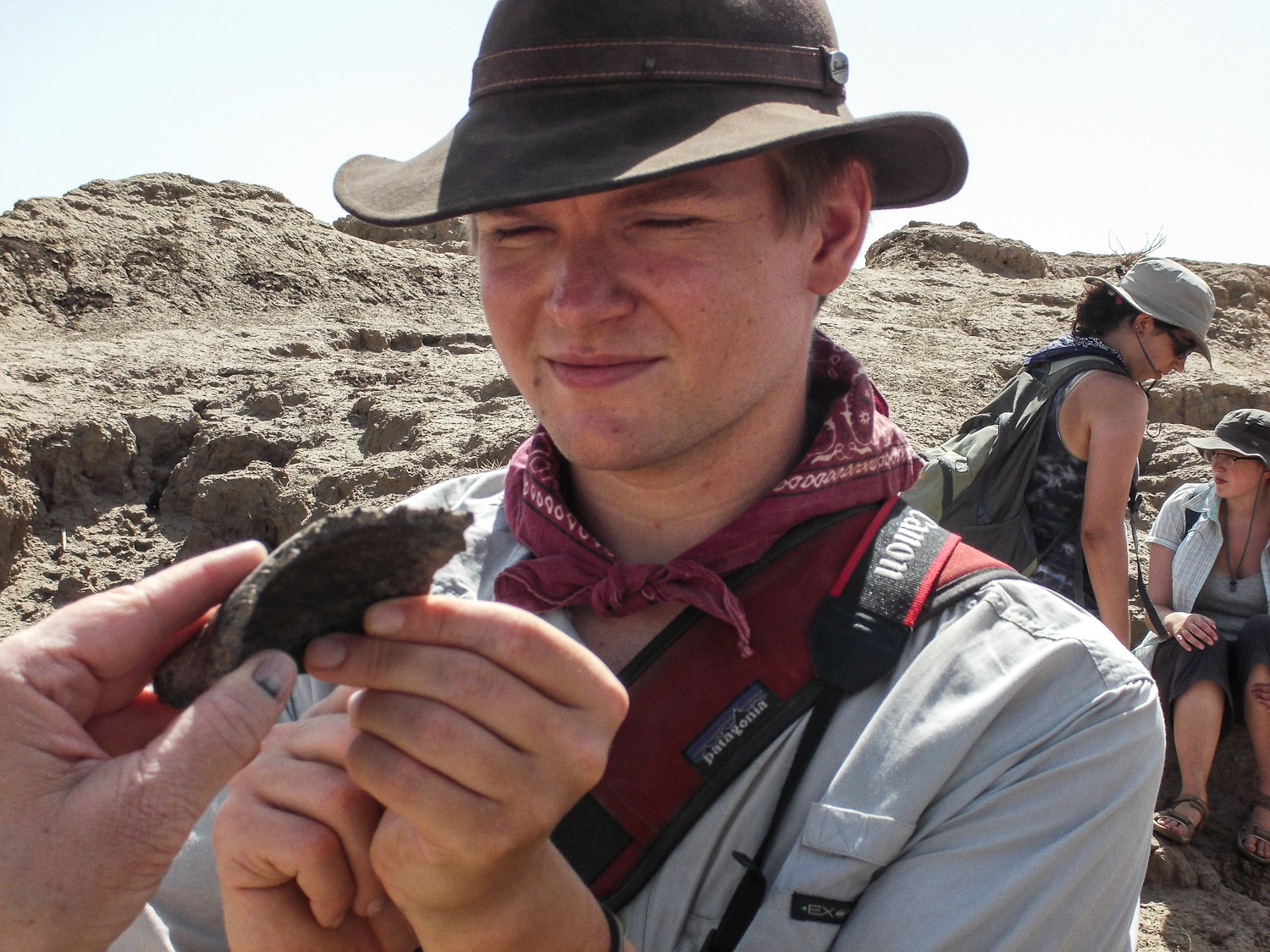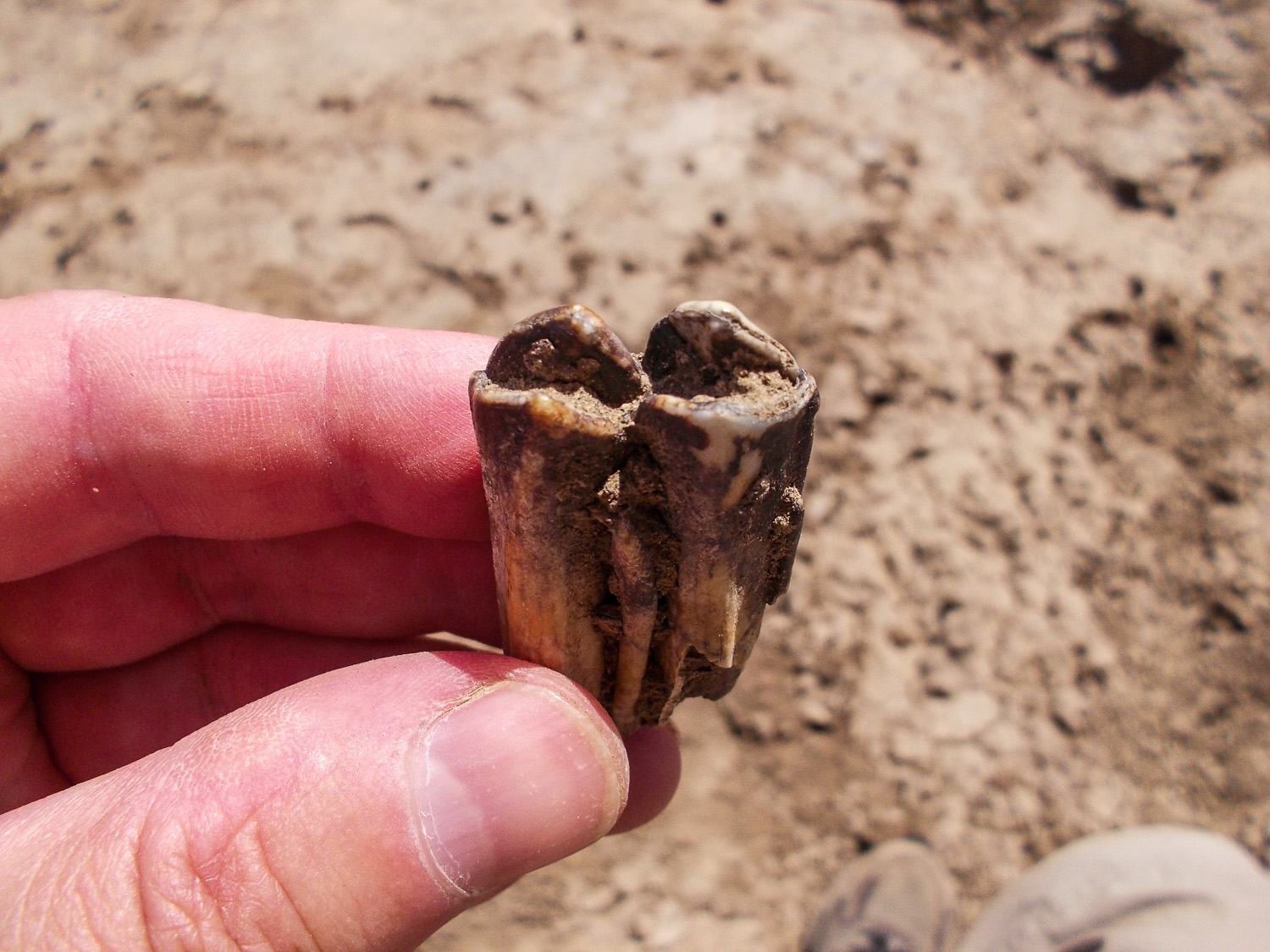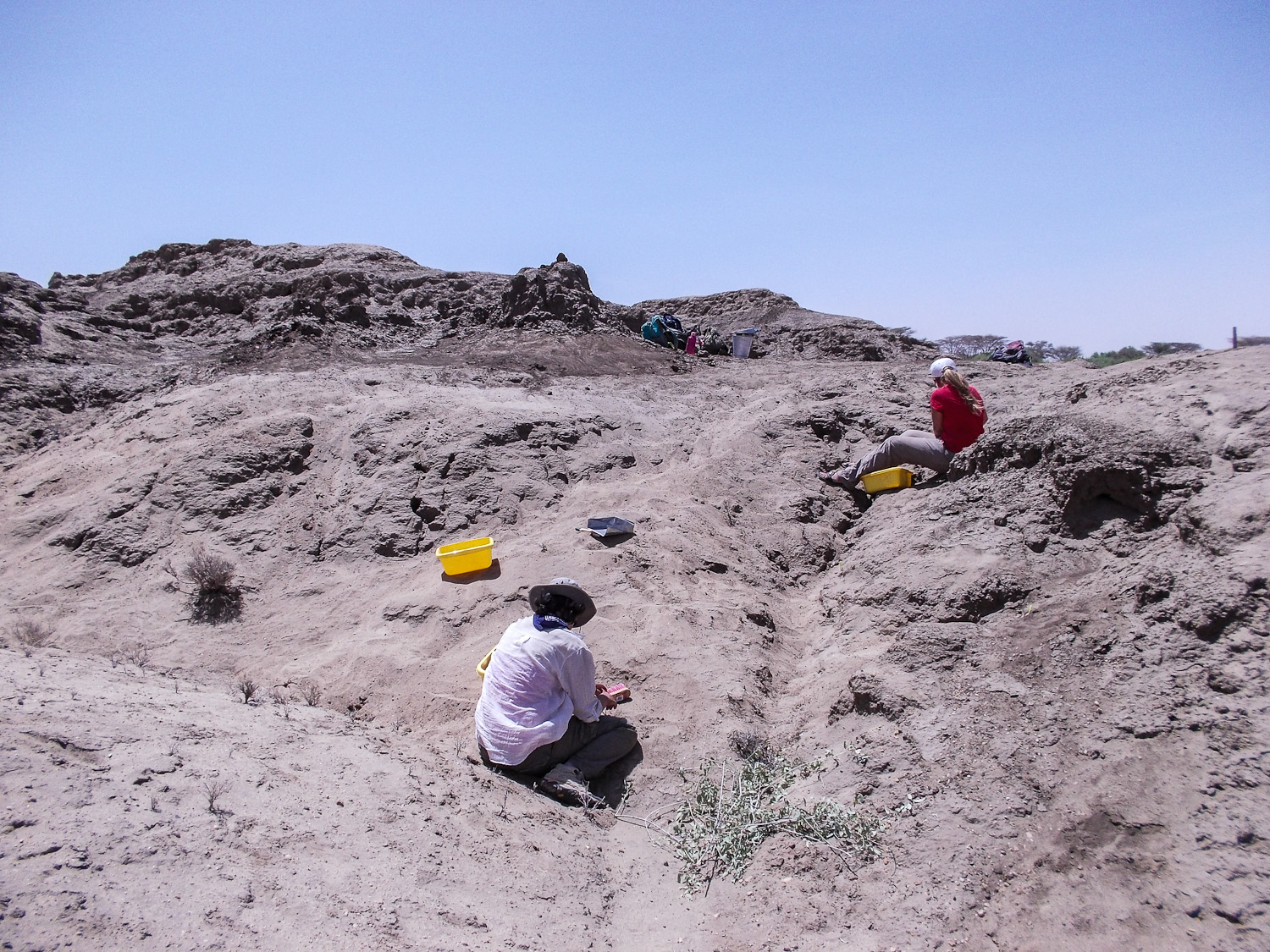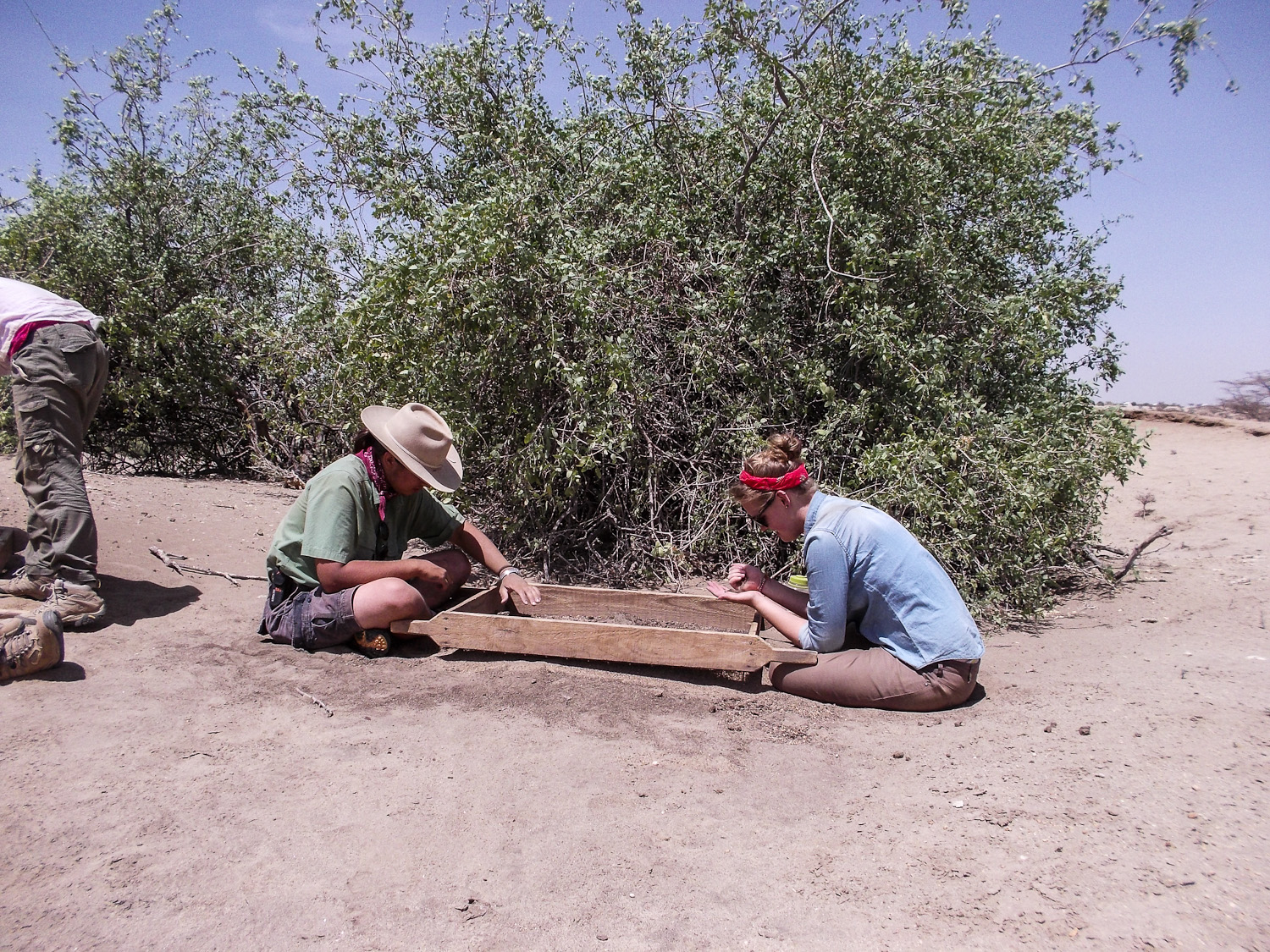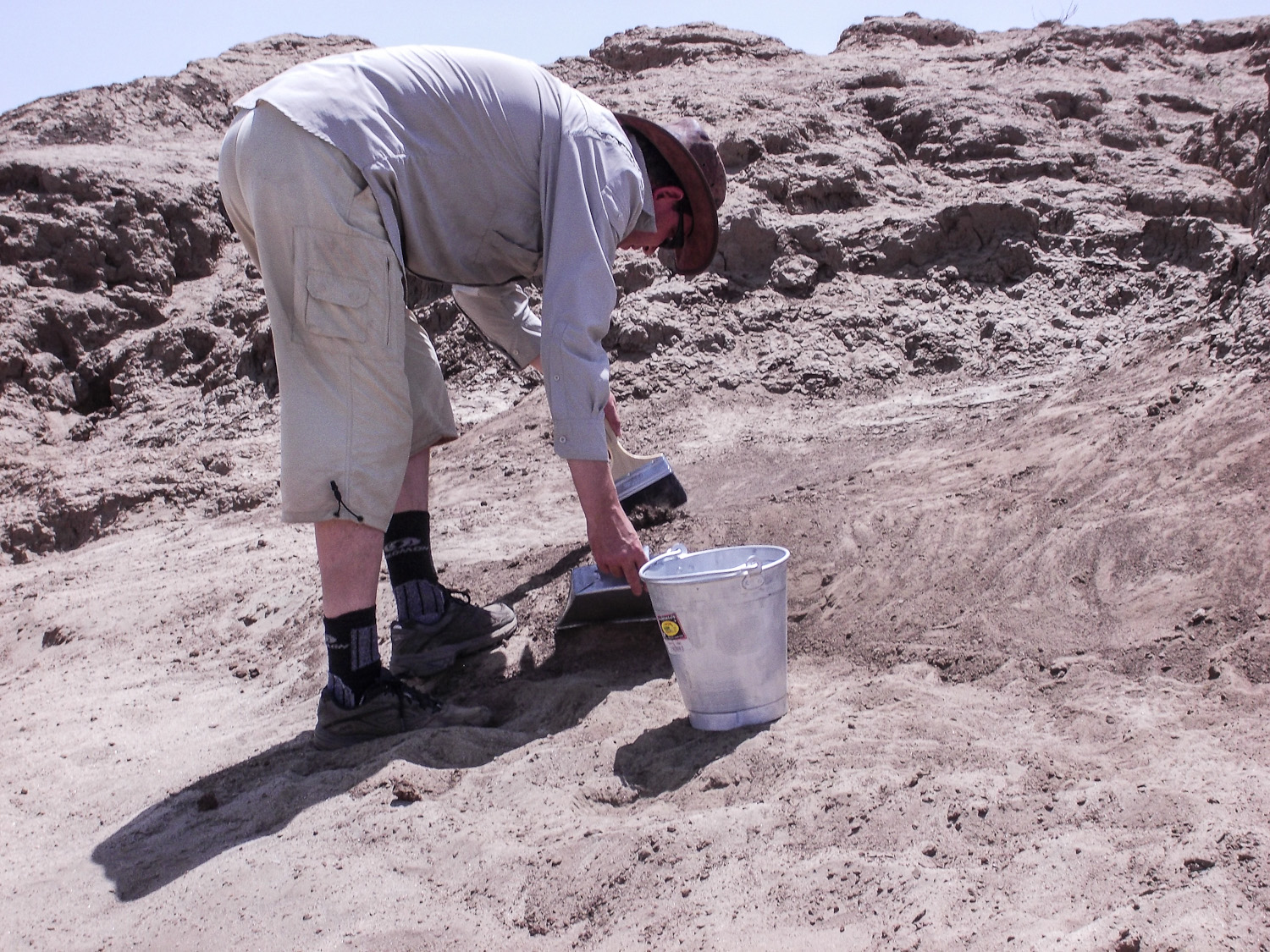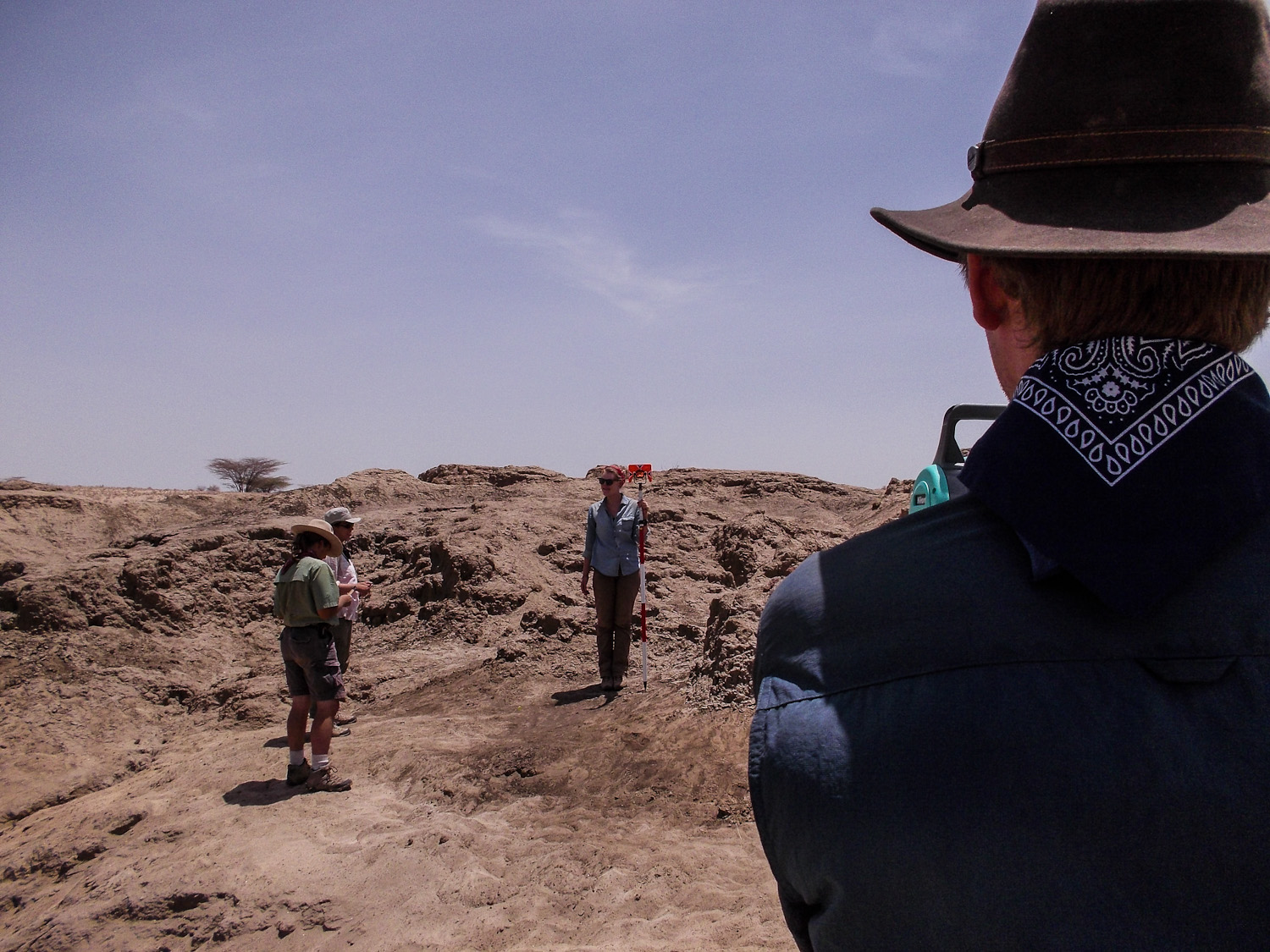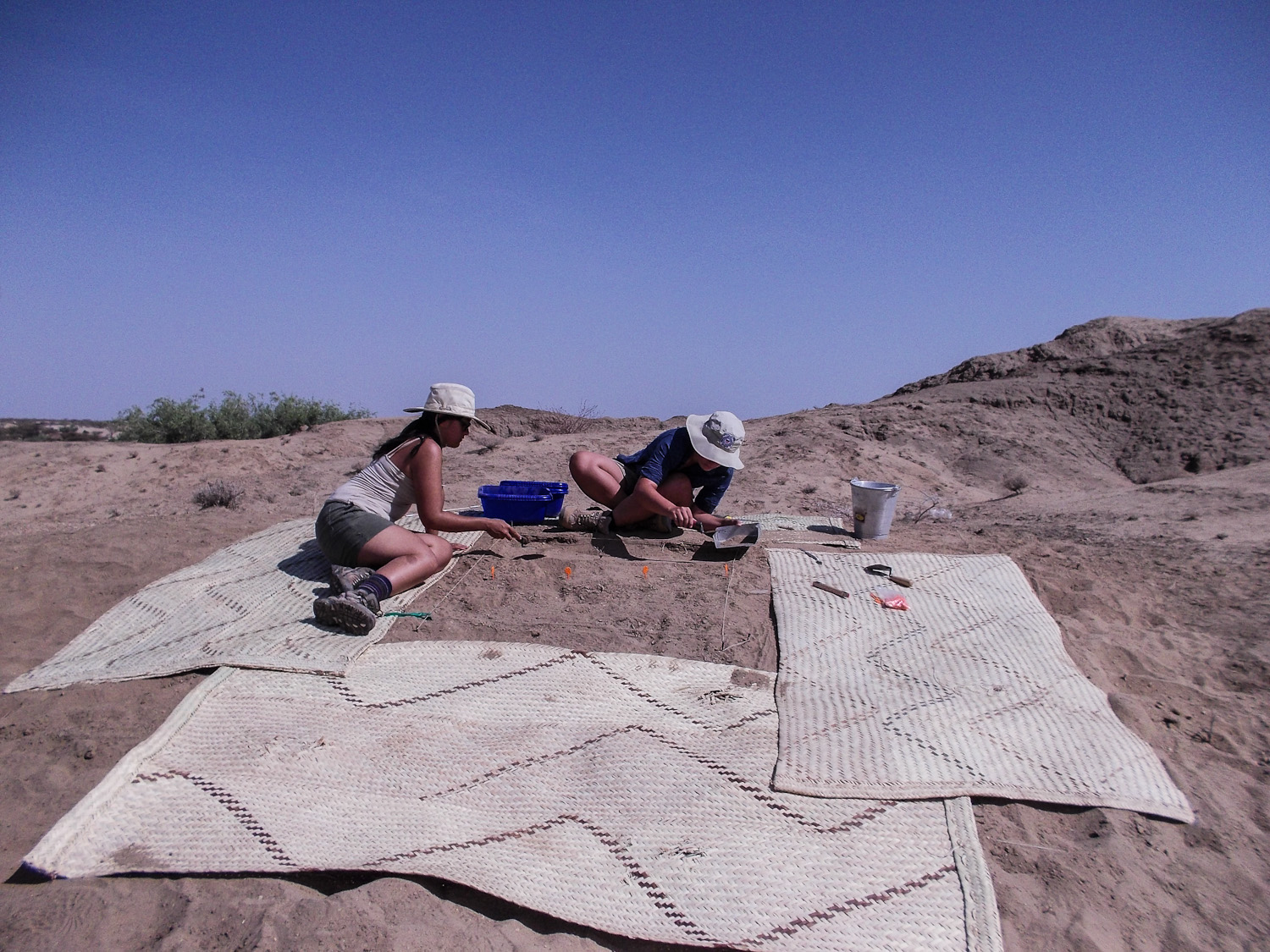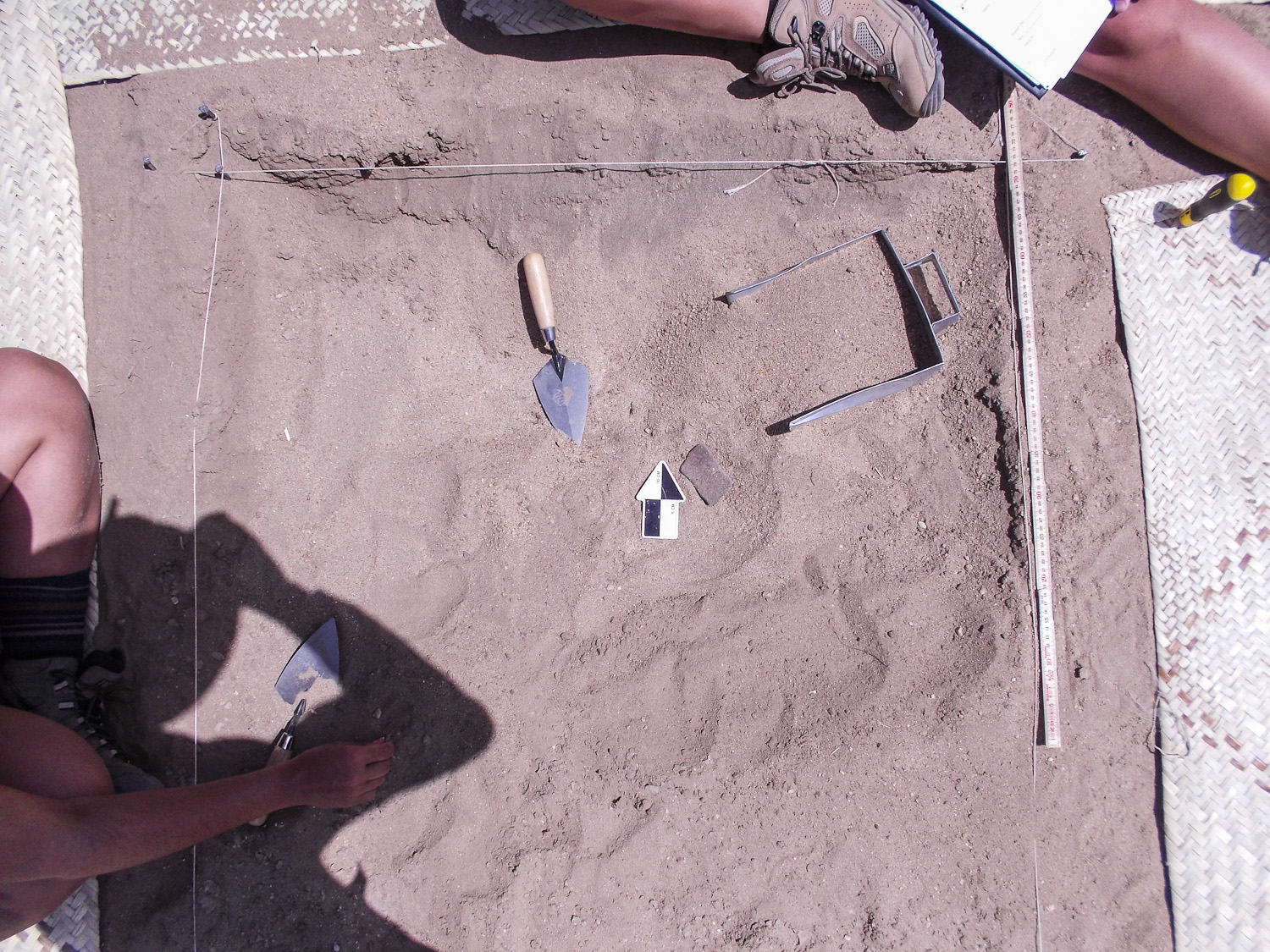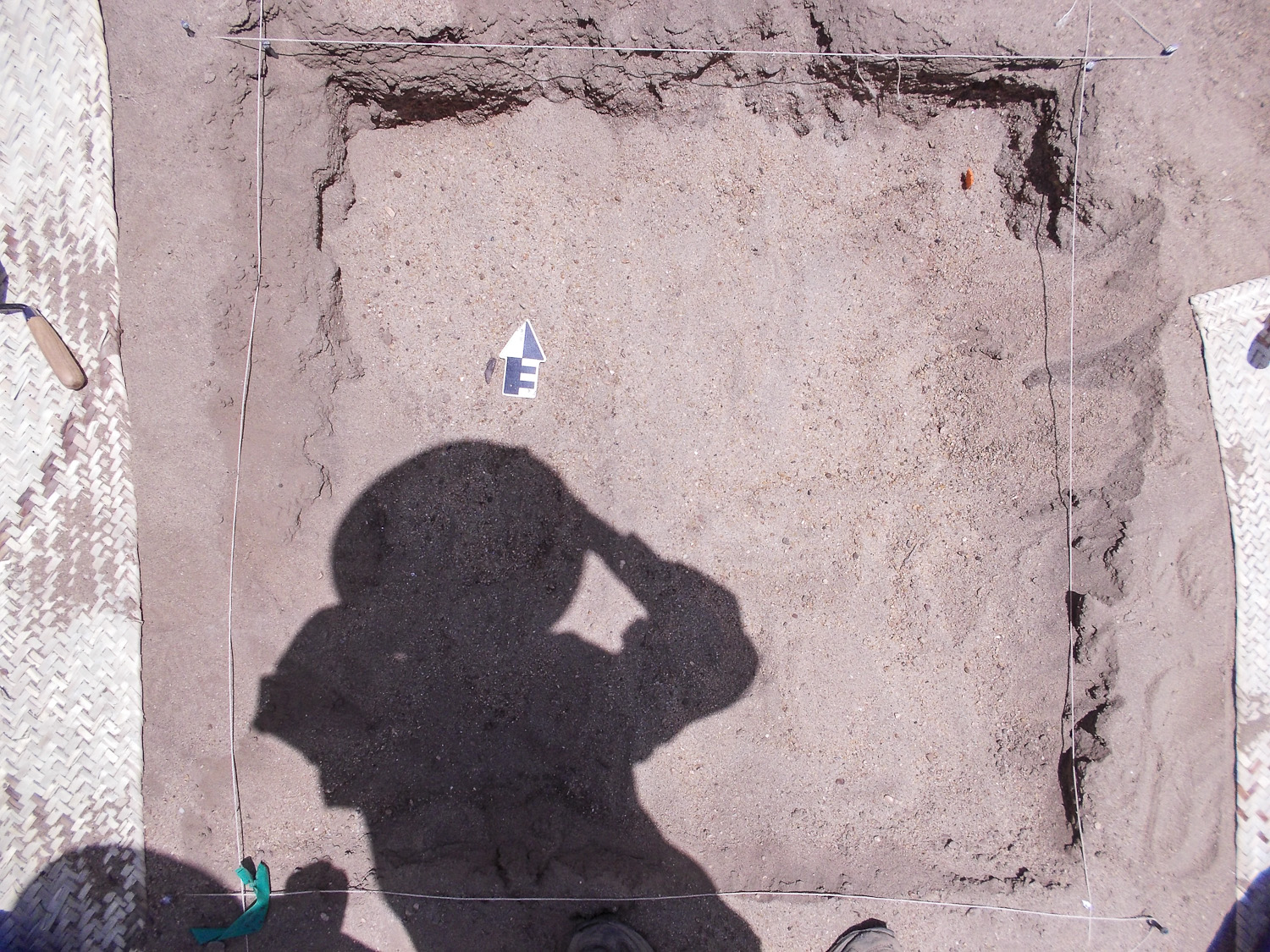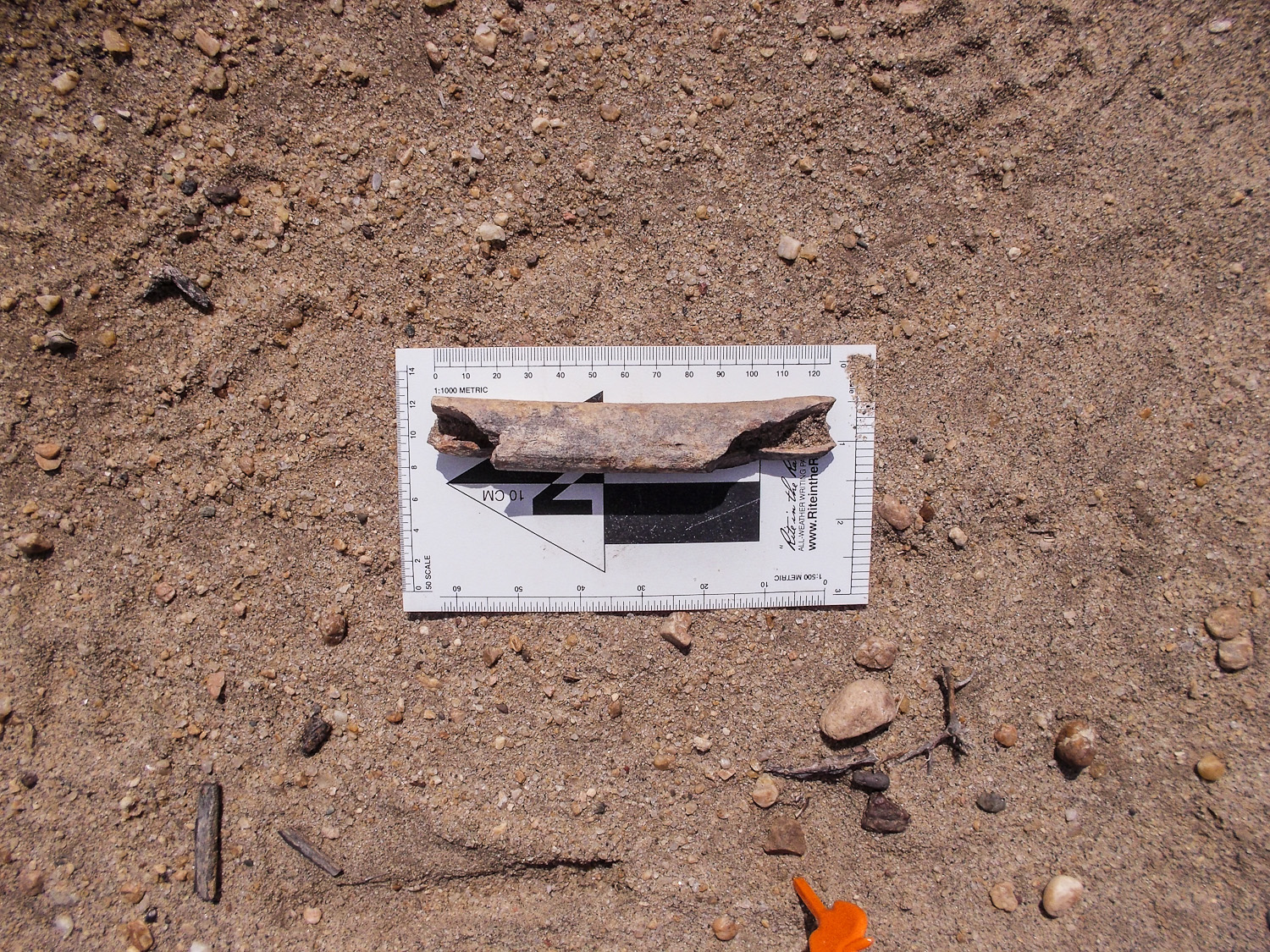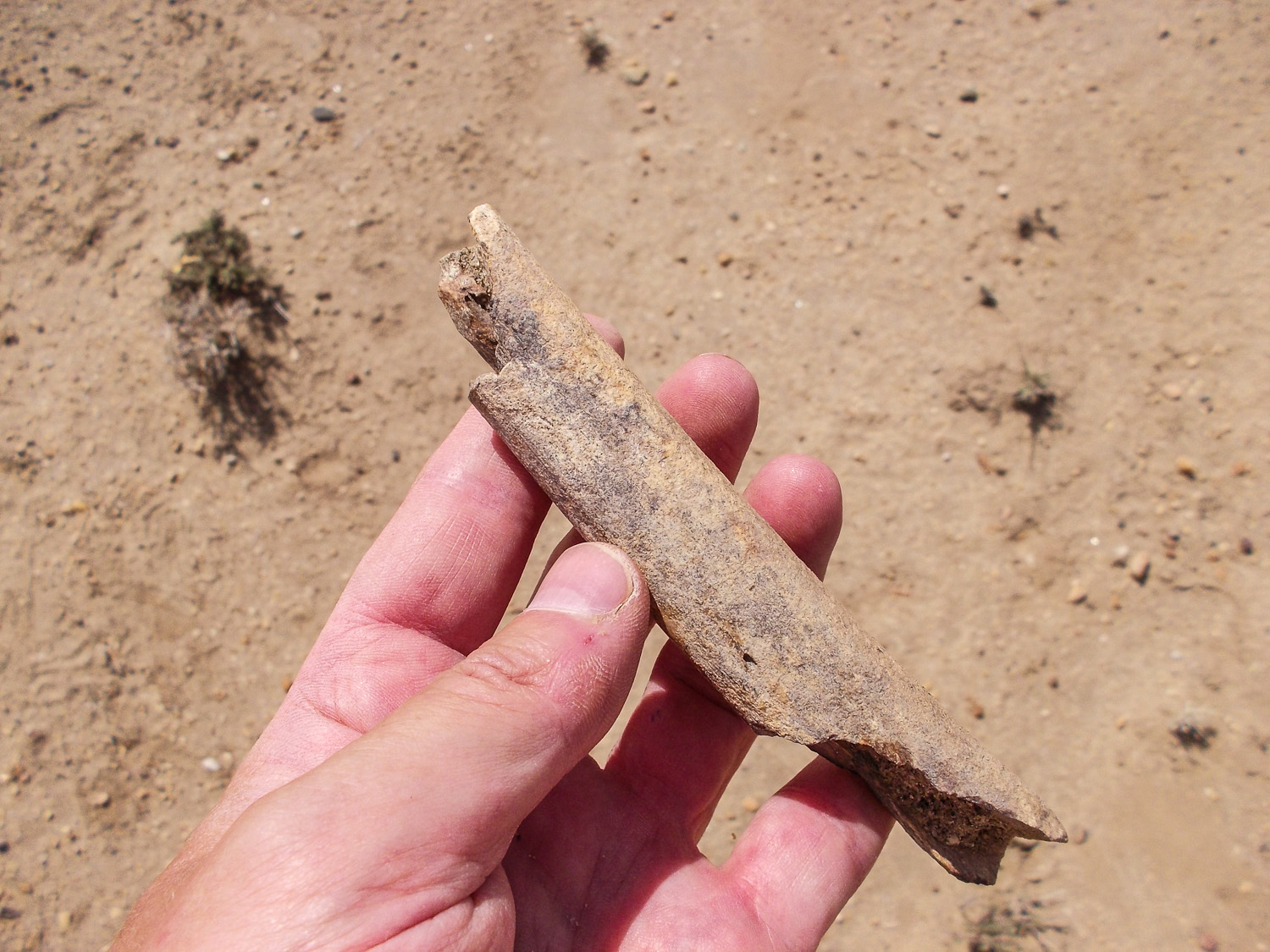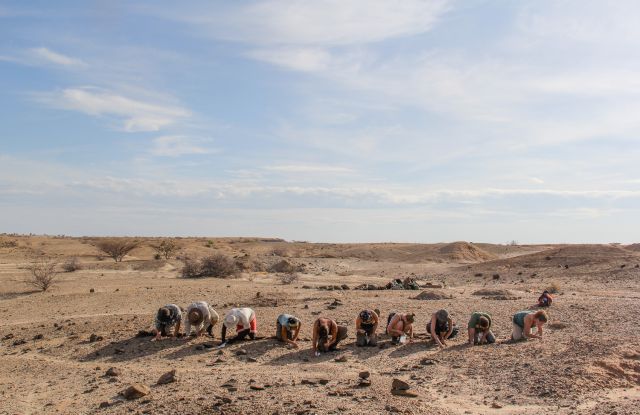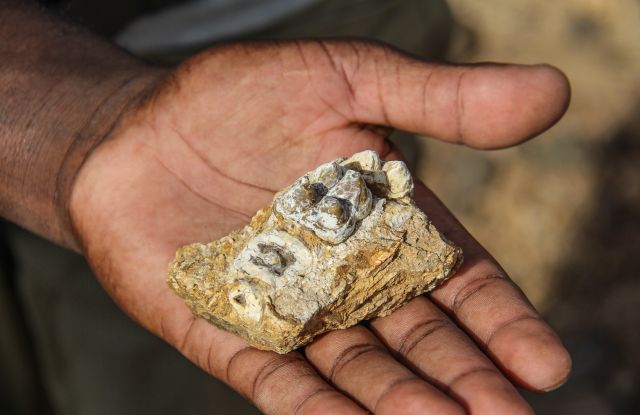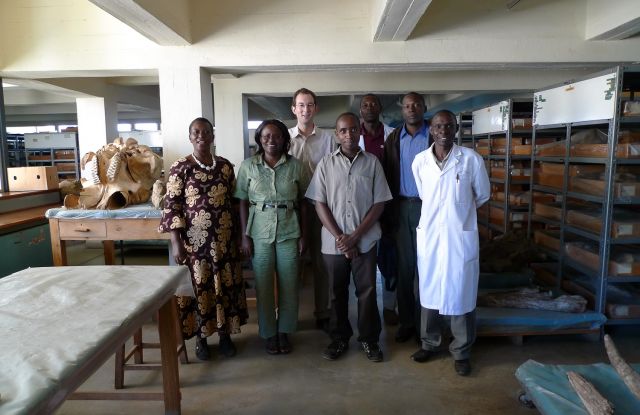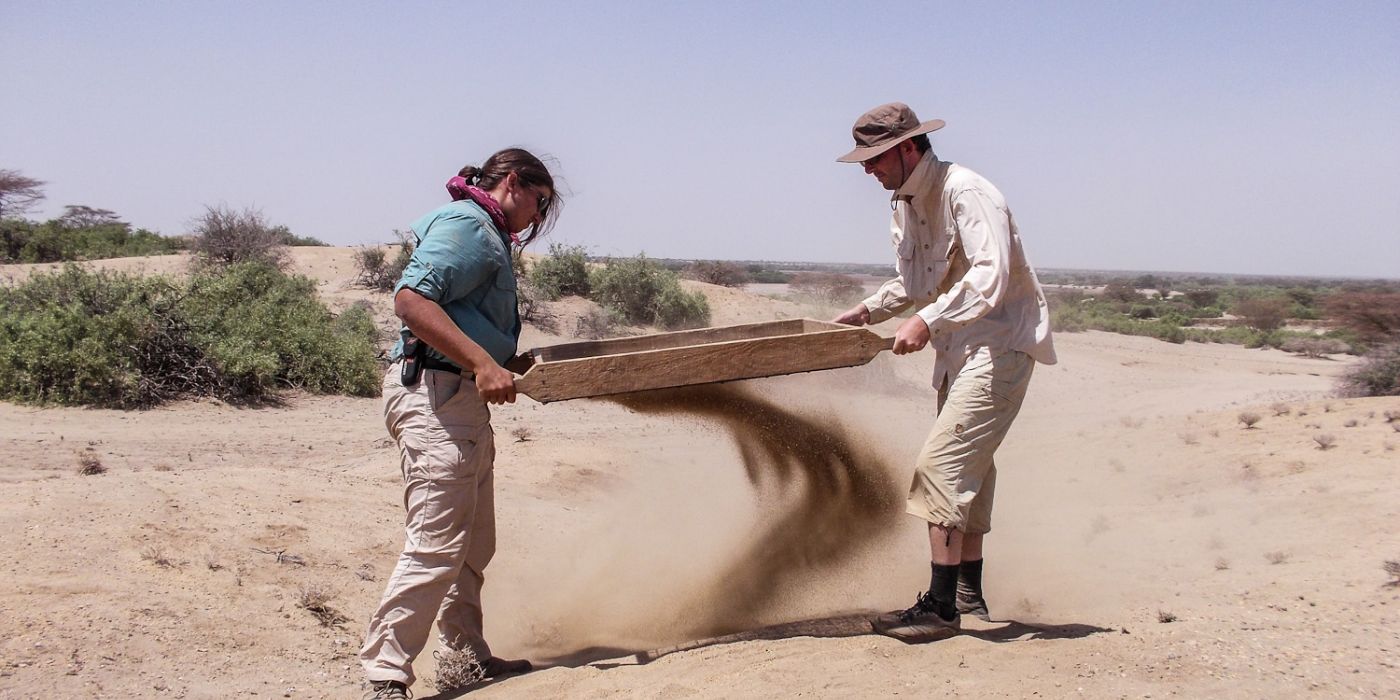

Discovering hominins
Initially, we thought that the sediments around an area adjoining the Turkwel river near the small settlement of Kang'athota would be early Holocene, i.e. around 11'000 years old. However, after sensationally discovering two robust partial frontals, the front part of the skull, during an initial survey, we knew that the sediments in the area must be much older than thought. Subsequent comparison with late Pleistocene material back in the base camp confirmed that the two specimens are from early human ancestors (hominins), possibly Homo helmei (around 260'000 years old) At the site, I also discovered both a central shaft and a proximal articulation of a hominin tibia. We eventually decided to dig four test pits, unearthing some interesting human ancestral artifacts and animal fossils, which should help to further characterize the site and constrain its dating.
